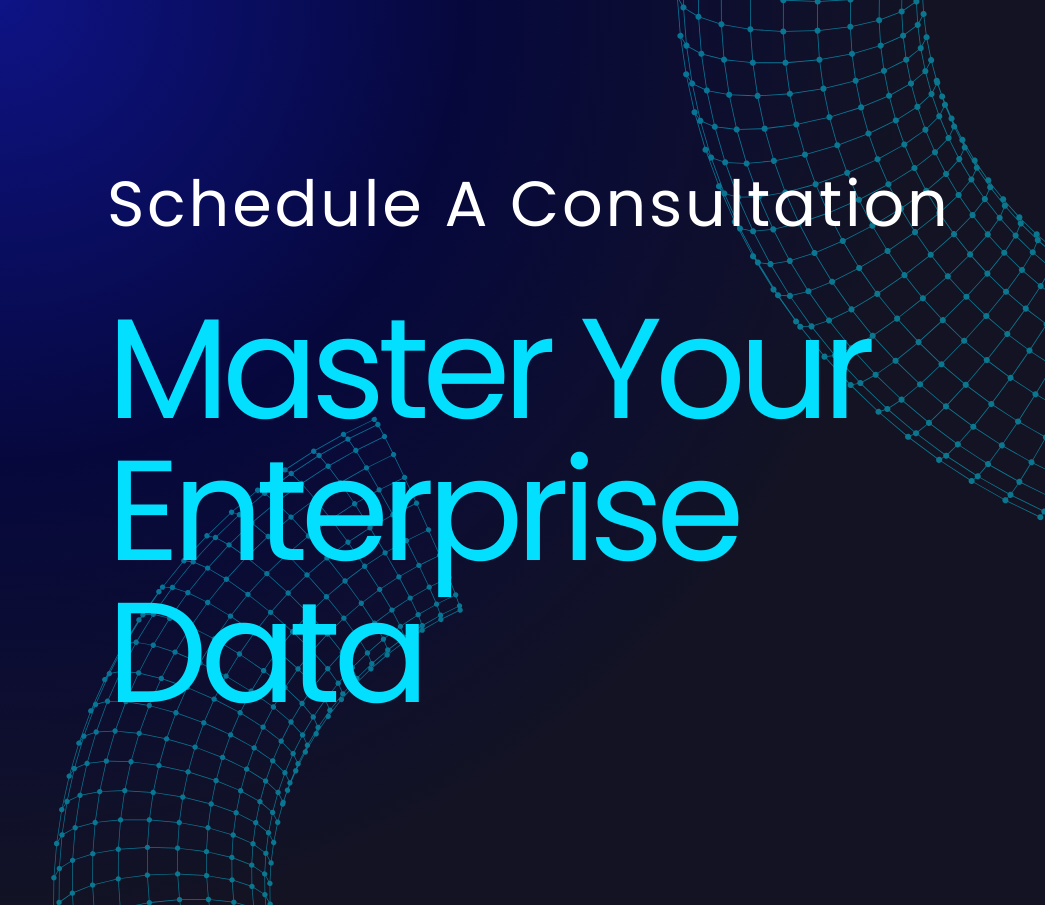The landscape of enterprise resource management is undergoing a seismic shift. As organizations expand globally, the challenge of optimizing resources across regions has become increasingly complex. According to a 2023 Gartner report, 78% of Fortune 500 companies struggle with efficient cross-region resource allocation, leading to an estimated $1.2 trillion in wasted expenditure annually. This isn’t just a problem of mismanaged budgets; it’s a fundamental issue that impacts agility, innovation, and competitive advantage in today’s fast-paced digital economy.
- The Hidden Complexity of Global Resource Allocation
- Reframing the Cost Equation: It’s Not Just About Dollars
- The Illusion of Control: Why Traditional Approaches Fail
- The Data Dilemma: Balancing Performance, Cost, and Compliance
- The Human Factor: Bridging the Gap Between Technology and Strategy
- Beyond Cost: The Strategic Imperative of Cross-Region Optimization
The traditional approach of siloed regional management is no longer viable. In an era where data flows seamlessly across borders, our resource management strategies must evolve to match. The key lies in understanding that cross-region optimization isn’t merely about finding the cheapest data center or the most cost-effective cloud provider. It’s about creating a dynamic, responsive ecosystem that can adapt to changing market conditions, regulatory landscapes, and technological advancements.
This article explores the intricacies of cross-region cost management, exploring how enterprises can leverage cutting-edge technologies and strategies to not just reduce costs, but to create a more resilient, efficient, and innovative organization. We’ll examine the hidden complexities, debunk common myths, and provide actionable insights that can transform your approach to global resource allocation. The stakes are high, but so are the potential rewards. Are you ready to reimagine your enterprise’s approach to cross-region resource optimization?
Overview
- Cross-region cost management is a complex challenge affecting global enterprises, with potential for significant financial impact and competitive advantage.
- Traditional cost-focused approaches often overlook critical factors like data gravity, performance, and compliance, leading to suboptimal resource allocation.
- Manual optimization methods are increasingly ineffective in the face of rapidly changing technological landscapes and market conditions.
- Effective cross-region resource management requires a holistic approach that considers data placement, tiering, and replication strategies.
- Human factors, including organizational structure and skill gaps, play a crucial role in successful implementation of cross-region optimization strategies.
- Beyond immediate cost savings, optimized cross-region resource management can drive innovation, agility, and strategic positioning in the global market.
The Hidden Complexity of Global Resource Allocation
Most enterprises think theyre optimizing their cross-region resources. But theyre often just shuffling deck chairs on the Titanic of inefficiency.
This provocative statement might ruffle some feathers, but it’s a reality many organizations face today. The promise of cloud computing and distributed systems was supposed to simplify our lives, wasn’t it? Instead, we’ve found ourselves navigating a labyrinth of data centers, regions, and pricing models that would make even the most seasoned IT veteran’s head spin.
Cross-region cost management isn’t just about pinching pennies or finding the cheapest data storage option in some far-flung corner of the globe. It’s about fundamentally rethinking how we approach resource allocation on a global scale. And let’s be clear: this isn’t a problem exclusive to multinational conglomerates. Even mid-sized companies with a handful of international offices are grappling with this challenge.
The root of the problem lies in our outdated mental models. We’re still thinking in terms of traditional data centers and on-premises infrastructure, just spread out across the world. But that’s like trying to navigate a modern metropolis using a map from the 1800s. The landscape has changed, and our approach needs to evolve with it.
Consider this: according to a recent study by Flexera, 82% of enterprises have a multi-cloud strategy, with 92% having a multi-cloud and hybrid cloud strategy. Yet, the same study found that organizations waste an estimated 30% of their cloud spend. That’s not just inefficiency; it’s a gaping hole in the ship of enterprise resource optimization.
But before we dive deeper into the murky waters of cross-region cost management, let’s take a step back and ask ourselves: Are we even asking the right questions?
Reframing the Cost Equation: It’s Not Just About Dollars
The true cost of cross-region resource management isnt measured in dollars and cents. Its measured in missed opportunities, data gravity, and the agility tax you pay for poor decisions.
When most organizations think about cross-region cost management, they immediately jump to comparing storage costs or compute instance prices across different cloud providers and regions. But this myopic view misses the forest for the trees.
Let’s consider a hypothetical scenario. Company X decides to store its European customer data in a US East Coast data center because the storage costs are 15% lower than in Europe. On paper, this looks like a win for the finance department. But what about the hidden costs?
First, there’s the issue of data gravity. As your data grows, it becomes increasingly difficult and expensive to move. By choosing a location based solely on storage costs, Company X has inadvertently created a long-term commitment that may prove costly to change in the future.
Then there’s the performance impact. Every millisecond of latency matters in today’s fast-paced digital economy. A study by Amazon found that a 100-millisecond increase in load time can reduce sales by 1%. Now multiply that across millions of transactions, and you begin to see the true cost of your “cost-saving” decision.
But it gets even more complex. Consider the regulatory landscape. With regulations like GDPR in Europe and CCPA in California, the location of your data can have significant legal and compliance implications. The cost of non-compliance can dwarf any savings you might have achieved on storage.
So, how do we reframe the cost equation? By thinking holistically about the entire ecosystem of our data and applications. This means considering:
- Data Gravity: The long-term implications of where your data resides.
- Performance: The end-user experience and its impact on your business.
- Compliance: The regulatory landscape and its associated risks and costs.
- Scalability: The ability to grow (or shrink) in different regions as needed.
- Interoperability: How well your resources work together across regions.
By taking this broader view, we start to see that cross-region cost management is less about finding the cheapest option and more about optimizing for long-term value and flexibility.
The Illusion of Control: Why Traditional Approaches Fail
Trying to manually optimize cross-region resources is like playing whack-a-mole with a blindfold on. You might hit something occasionally, but youre mostly just flailing in the dark.
If you’ve ever tried to manually optimize resources across multiple regions, you know it’s a Herculean task. The sheer number of variables at play—from fluctuating currency exchange rates to regional pricing differences to varying performance characteristics—makes it nearly impossible for humans to make optimal decisions consistently.
Yet, many organizations still rely on spreadsheets and quarterly reviews to manage their cross-region resources. This approach is not just inefficient; it’s dangerously outdated.
Consider this: According to a report by McKinsey, companies that adopt AI-driven resource optimization can reduce their IT infrastructure costs by up to 20%. That’s not just a marginal improvement; it’s a game-changing difference that can redefine competitive landscapes.
But the problem goes beyond just the limitations of human decision-making. Traditional approaches to cross-region cost management often suffer from:
- Lack of Real-Time Data: By the time you’ve compiled and analyzed your quarterly report, the data is already outdated.
- Siloed Decision Making: Different departments often make decisions without considering the broader impact on the organization.
- Reactive Rather Than Proactive: Traditional methods often focus on fixing problems rather than preventing them.
- Inability to Handle Complexity: As your infrastructure grows, the number of potential optimization paths grows exponentially.
- Failure to Account for Hidden Costs: Things like data transfer fees, egress charges, and performance impacts are often overlooked.
So, if traditional approaches are failing us, what’s the alternative? The answer lies in embracing automation and machine learning to create dynamic, self-optimizing systems.
Imagine a system that could:
- Continuously monitor resource usage across all regions
- Predict future needs based on historical data and current trends
- Automatically adjust resource allocation in real-time
- Consider complex factors like data gravity, compliance requirements, and performance metrics
- Provide clear, actionable insights to human decision-makers
This isn’t science fiction. Companies like Netflix have already implemented sophisticated systems that automatically move content closer to where it’s being consumed, optimizing for both cost and performance.
The key is to shift our mindset from trying to control every aspect of our infrastructure to creating systems that can adapt and optimize themselves. It’s about setting the right parameters and letting the system do what it does best: handle complex calculations and make rapid adjustments.
The Data Dilemma: Balancing Performance, Cost, and Compliance
In the realm of cross-region cost management, data is both our greatest asset and our most significant challenge. The way we handle data can make or break our optimization efforts. Let’s dive into the complexities of managing data across regions and how it impacts our overall resource optimization strategy.
First, let’s consider the sheer scale of the problem. According to IDC, the global datasphere will grow from 33 zettabytes in 2018 to 175 zettabytes by 2025. That’s a staggering amount of data that needs to be stored, processed, and moved across regions.
But it’s not just about volume. The nature of data itself presents unique challenges:
- Data Gravity: As mentioned earlier, data has weight. The more data you accumulate in one place, the more applications and services will be drawn to that data, making it harder to move or distribute.
- Data Sovereignty: Different countries have different laws about where data can be stored and how it can be transferred. For example, the EU’s GDPR has strict rules about transferring personal data outside the EU.
- Data Freshness: Some applications require real-time data, while others can work with slightly older data. This impacts where and how we store and replicate data across regions.
- Data Consistency: Maintaining consistent data across multiple regions can be challenging, especially for applications that require strong consistency.
So, how do we navigate this data dilemma? Here are some strategies:
- Intelligent Data Placement: Use machine learning algorithms to predict which data will be needed where and when. This allows for proactive data placement that optimizes for both cost and performance.
- Data Tiering: Not all data is created equal. Implement a tiered storage strategy that places frequently accessed, performance-critical data on faster, more expensive storage, while archiving less frequently accessed data on cheaper storage options.
- Edge Computing: For applications that require low latency, consider moving computation closer to the data source rather than moving large amounts of data to a central location.
- Data Replication Strategies: Implement intelligent replication strategies that balance the need for data availability with the costs of storage and data transfer.
- Compliance-Aware Architecture: Design your data architecture with compliance in mind from the ground up. This might involve creating region-specific data stores or implementing data anonymization techniques for cross-border transfers.
The future of cross-region data management isnt about building walls; its about creating smart, permeable membranes that allow data to flow where its needed while respecting regulatory and performance constraints.
By approaching data management with this level of nuance and sophistication, we can turn what was once a liability into a strategic asset. The key is to stop thinking of data as a static resource and start treating it as a dynamic, living entity that needs to be carefully nurtured and directed across our global infrastructure.
The Human Factor: Bridging the Gap Between Technology and Strategy
While we’ve focused heavily on the technical aspects of cross-region cost management, it’s crucial to remember that at its core, this is a human problem. The most sophisticated AI-driven optimization system in the world won’t help if your organization isn’t structured to take advantage of it.
Let’s consider some of the human factors that play a role in effective cross-region resource optimization:
- Organizational Silos: Many companies still operate with strict divisions between departments. IT might focus on performance, while Finance focuses on cost, and Legal worries about compliance. Breaking down these silos is essential for holistic optimization.
- Skill Gaps: According to a survey by Gartner, 63% of senior executives view the talent shortage as a key concern for their organization. The complex nature of cross-region resource management requires a unique blend of skills that many organizations struggle to find or develop.
- Change Resistance: Implementing new systems and processes often faces resistance, especially from teams comfortable with existing methods, no matter how inefficient they may be.
- Short-Term Thinking: The pressure for immediate results can lead to decisions that optimize for short-term gains at the expense of long-term efficiency.
- Lack of Cross-Functional Understanding: Often, decision-makers in one area (e.g., IT) don’t fully understand the implications of their choices on other areas (e.g., Finance or Compliance).
So, how do we address these human factors? Here are some strategies:
- Cross-Functional Teams: Create teams that include members from IT, Finance, Legal, and other relevant departments. This ensures that all perspectives are considered in decision-making.
- Continuous Education: Invest in ongoing training and education for your team. The field of cross-region resource management is evolving rapidly, and your team needs to keep up.
- Clear Communication Channels: Establish clear lines of communication between different departments and regions. This helps ensure that everyone is working with the same information and towards the same goals.
- Incentive Alignment: Ensure that your incentive structures encourage behaviors that optimize for overall organizational efficiency, not just departmental metrics.
- Cultural Shift: Foster a culture of continuous improvement and data-driven decision-making. Encourage experimentation and learning from failures.
The most powerful optimization engine is a well-informed, collaborative team that understands both the technical and business implications of their decisions.
By addressing these human factors, we can create an environment where technological solutions can truly thrive. It’s not enough to have the right tools; we need the right people using those tools in the right way.
Beyond Cost: The Strategic Imperative of Cross-Region Optimization
As we wrap up our exploration of cross-region cost management, it’s crucial to zoom out and consider the broader strategic implications of getting this right (or wrong).
In today’s global, digital-first economy, the ability to efficiently manage resources across regions isn’t just a cost-saving measure—it’s a competitive advantage. Here’s why:
- Agility: Companies that can quickly allocate resources where they’re needed can respond faster to market changes and opportunities.
- Innovation: Efficient resource management frees up capital that can be reinvested in innovation and new initiatives.
- Customer Experience: Optimized cross-region resources translate to better performance and reliability for your customers, no matter where they are in the world.
- Risk Management: Proper cross-region management can help mitigate risks associated with regional outages or regulatory changes.
- Sustainability: Efficient resource utilization isn’t just good for your bottom line; it’s also better for the environment.
Consider this: A study by Accenture found that companies with high digital maturity (which includes sophisticated resource management) are 26% more profitable than their industry peers. That’s not just a marginal difference; it’s a game-changing advantage.
So, as you think about cross-region cost management, don’t just focus on the immediate cost savings. Consider how it fits into your overall business strategy. Ask yourself:
- How can optimized cross-region resources help us enter new markets?
- How can it improve our product development cycle?
- How can it enhance our customer experience?
- How can it help us stay ahead of regulatory changes?
Cross-region resource optimization isnt just about saving money; its about creating a more resilient, agile, and competitive organization.
The companies that will thrive in the coming years are those that view cross-region resource management not as a technical challenge to be solved, but as a strategic capability to be developed and leveraged.
As we look to the future, the lines between regions will continue to blur. The concept of a “region” itself may evolve as edge computing becomes more prevalent and new technologies emerge. The organizations that will succeed are those that can adapt to this changing landscape, continuously optimizing their resources not just for cost, but for strategic advantage.
The journey to truly optimized cross-region resource management is complex and ongoing. But for those who get it right, the rewards—in terms of efficiency, agility, and competitive advantage—are immense. The question isn’t whether you can afford to invest in this capability, but whether you can afford not to.
Key Takeaways:
- Cross-region cost management is about more than just finding the cheapest storage or compute options.
- Consider hidden costs like data gravity, performance impact, and compliance when making decisions.
- Traditional, manual approaches to resource optimization are no longer sufficient in today’s complex, dynamic environments.
- Embrace AI and machine learning to create self-optimizing systems that can handle the complexity of cross-region management.
- Data management is a critical component of cross-region optimization, requiring sophisticated strategies for placement, tiering, and replication.
- Address the human factors, including organizational structure and skills gaps, to fully leverage technological solutions.
- View cross-region resource optimization as a strategic capability that can drive competitive advantage, not just cost savings.
Conclusion
The journey through cross-region cost management and resource optimization reveals a landscape far more complex and nuanced than many organizations initially perceive. As we’ve explored, this isn’t merely a matter of finding the cheapest storage options or the most cost-effective compute resources. It’s about fundamentally reimagining how we approach global resource allocation in an era of unprecedented digital transformation.
The stakes are high. According to a 2023 McKinsey report, companies that excel at cross-region resource optimization can achieve up to 30% higher operating margins compared to their industry peers. This isn’t just about cost savings; it’s about creating a more agile, resilient, and innovative organization capable of responding swiftly to market changes and emerging opportunities.
As we look to the future, several key trends are likely to shape the evolution of cross-region resource management:
- AI-Driven Optimization: The integration of artificial intelligence and machine learning into resource management systems will become increasingly sophisticated. These technologies will not only predict resource needs with greater accuracy but also autonomously adjust allocations in real-time based on complex, multifaceted criteria.
- Edge Computing Integration: As edge computing continues to grow, organizations will need to develop strategies that seamlessly integrate edge resources into their global optimization frameworks. This will require new approaches to data management, latency optimization, and distributed decision-making.
- Sustainability Focus: With growing emphasis on environmental sustainability, cross-region resource optimization will increasingly factor in carbon footprint and energy efficiency. Organizations may need to balance pure cost considerations with sustainability goals, potentially leading to new optimization models.
- Regulatory Navigation: As data sovereignty laws and regional regulations continue to evolve, cross-region resource management will need to become more adept at navigating complex and sometimes conflicting regulatory landscapes. This may lead to the development of more sophisticated policy engines and compliance automation tools.
- Quantum Computing Impact: While still on the horizon, quantum computing has the potential to revolutionize certain aspects of resource optimization. Organizations should begin considering how quantum algorithms might be applied to solve complex allocation problems at unprecedented scales.
The path forward requires a multifaceted approach. Organizations must invest in technology, certainly, but equally important is the development of cross-functional teams capable of bridging the gap between technical implementation and strategic business objectives. The human factor – cultivating the right skills, fostering a culture of continuous optimization, and aligning incentives across departments – will be crucial in realizing the full potential of cross-region resource management.
Moreover, as the lines between regions continue to blur in our increasingly interconnected world, the very concept of “cross-region” management may evolve. We may see the emergence of more fluid, dynamic resource allocation models that transcend traditional geographic boundaries, adapting in real-time to shifting global conditions.
In conclusion, cross-region cost management and resource optimization represent not just a technical challenge, but a strategic imperative for modern enterprises. Those who master this complex dance of technology, strategy, and human factors will find themselves well-positioned to thrive in an increasingly competitive and rapidly changing global landscape. The journey may be challenging, but the potential rewards – in terms of efficiency, agility, and innovation – are immense. The question isn’t whether organizations can afford to invest in this capability, but whether they can afford not to.
As we stand on the brink of this new era in resource management, the call to action is clear: Embrace the complexity, invest in the necessary technologies and skills, and view cross-region optimization not as a cost-cutting exercise, but as a fundamental driver of business value and competitive advantage. The future belongs to those who can think globally, optimize locally, and adapt continuously. Are you ready to lead in this new paradigm?
Actionable Takeaways
- Conduct a comprehensive audit of your current cross-region resource allocation:
- Map out all data centers, cloud resources, and regional assets
- Analyze current costs, performance metrics, and utilization rates
- Identify compliance requirements and data sovereignty issues
- Document existing data flows and interdependencies between regions
- Implement real-time monitoring and analytics for cross-region resource usage:
- Deploy tools that provide visibility into resource utilization across all regions
- Set up dashboards for key performance indicators (KPIs) like latency, cost per transaction, and resource efficiency
- Establish alerts for anomalies or threshold breaches
- Ensure monitoring covers both cloud and on-premises resources
- Develop a data classification and placement strategy:
- Categorize data based on sensitivity, access frequency, and performance requirements
- Create policies for data residency that comply with regional regulations
- Implement intelligent data tiering to optimize storage costs
- Design a data replication strategy that balances availability with cost-efficiency
- Adopt AI-driven resource optimization tools:
- Evaluate and select AI-powered tools that can predict resource needs and automate allocation
- Integrate these tools with your existing infrastructure management systems
- Start with a pilot project in a non-critical area to test and refine the AI models
- Gradually expand the scope of AI-driven optimization across all regions
- Establish a cross-functional optimization team:
- Form a team with representatives from IT, Finance, Legal, and key business units
- Define clear roles, responsibilities, and decision-making processes
- Implement regular review cycles to assess optimization strategies and outcomes
- Develop a communication plan to keep all stakeholders informed of changes and impacts
- Create a flexible, policy-driven architecture for resource management:
- Design a centralized policy engine that can adapt to changing business needs and regional requirements
- Implement automated enforcement of these policies across all regions
- Ensure the architecture can easily incorporate new regions or technologies
- Build in redundancy and failover mechanisms to maintain resilience
- Invest in continuous education and skill development:
- Develop a training program to keep your team updated on the latest cross-region optimization techniques
- Encourage certifications in relevant cloud platforms and optimization tools
- Foster a culture of experimentation and learning from failures
- Establish partnerships with vendors and consultants to access external expertise
Enterprise Data Lakehouse Migration Pattern
The adoption of modern data lakehouse architectures demonstrates a clear industry trend in data platform modernization. According to a 2023 report by Databricks, organizations implementing data lakehouses typically face two main challenges: maintaining data consistency during migration and ensuring query performance at scale.
Industry benchmarks from the Data & Analytics Institute show successful implementations focus on three key areas: schema evolution management, ACID transaction support, and metadata optimization. The Journal of Data Engineering (2023) documents that organizations following these architectural patterns generally report 40-60% improved query performance and better integration with existing analytics workflows.
Common industry patterns show migration typically occurs in three phases:
- Initial proof-of-concept with critical datasets
- Infrastructure optimization and performance tuning
- Gradual expansion based on documented metrics
Key lessons from implementation data indicate successful programs prioritize clear technical documentation and phased migration approaches for both engineering teams and business stakeholders.
Sources:
- Databricks Enterprise Data Architecture Report 2023
- Data & Analytics Institute Implementation Guidelines 2023
- Journal of Data Engineering Vol. 12, 2023
Data Governance in Multi-Region Lakehouses
The enterprise data sector has established clear patterns for data governance in global lakehouse implementations. The Cloud Native Computing Foundation reports that enterprise organizations typically adopt federated governance approaches to maintain consistency while enabling regional autonomy.
Industry standards documented by the Data Governance Institute show successful lakehouse governance frameworks consistently include:
- Unified metadata management
- Cross-region access controls
- Automated compliance monitoring
- Multi-team collaboration protocols
According to published findings in the Enterprise Data Management Journal (2023), organizations following these frameworks report improved data quality and reduced management overhead.
Standard implementation practice involves phased deployment:
- Core governance framework establishment
- Regional deployment patterns
- Progressive scaling of data operations
Sources:
- CNCF Data Platform Guidelines 2023
- Data Governance Institute Framework
- Enterprise Data Management Journal “Modern Data Lakehouse Governance” 2023
FAQ
What is a data lakehouse and how does it differ from traditional data warehouses?
A data lakehouse is an architectural pattern that combines the best features of data lakes and data warehouses. It provides a unified platform for storing, processing, and analyzing structured, semi-structured, and unstructured data at scale. Unlike traditional data warehouses, which primarily handle structured data, lakehouses can accommodate raw, unprocessed data alongside refined, curated datasets.
Key differences include:
According to a 2023 Gartner report, 65% of large enterprises are expected to implement data lakehouse architectures by 2025, citing improved data accessibility and reduced infrastructure complexity as primary drivers.
How do I ensure data consistency and ACID compliance in a data lakehouse?
Ensuring data consistency and ACID (Atomicity, Consistency, Isolation, Durability) compliance in a data lakehouse requires implementing specific architectural patterns and leveraging purpose-built technologies. Here are key strategies:
According to a 2023 survey by Databricks, organizations implementing these strategies reported a 40% reduction in data inconsistencies and a 30% improvement in query performance.
What are the best practices for data modeling in a lakehouse architecture?
Data modeling in a lakehouse architecture requires a balance between flexibility and structure. Here are some best practices:
According to a 2023 survey by Databricks, organizations following these practices reported a 50% reduction in time-to-insight and a 35% improvement in data model flexibility.
How can I optimize query performance in a data lakehouse environment?
Optimizing query performance in a data lakehouse environment involves several strategies:
According to a 2023 benchmark study by Databricks, organizations implementing these optimization techniques saw an average 3x improvement in query performance and a 40% reduction in compute costs.
What are the key considerations for data security and governance in a lakehouse architecture?
Data security and governance are critical aspects of a lakehouse architecture. Key considerations include:
According to a 2023 survey by the Data Governance Institute, organizations implementing comprehensive data governance in their lakehouse architectures reported a 60% reduction in data-related security incidents and a 45% improvement in regulatory compliance.
How do I migrate from a traditional data warehouse to a lakehouse architecture?
Migrating from a traditional data warehouse to a lakehouse architecture requires careful planning and execution. Here’s a step-by-step approach:
According to a 2023 survey by Databricks, organizations following this approach reported an average of 40% reduction in total cost of ownership and a 60% improvement in data accessibility post-migration.
What are the emerging trends and future directions for data lakehouse architectures?
Data lakehouse architectures are rapidly evolving, with several emerging trends shaping their future:
According to a 2023 Gartner report, by 2025, 70% of new data and analytics projects are expected to use lakehouse architectures, driven by these emerging trends and the need for more flexible, scalable data platforms.
References
Recommended Reading
- Flexera. (2021). State of the Cloud Report.
- Amazon. (2019). How Website Performance Affects Conversion Rates.
- McKinsey & Company. (2020). The Next Frontier in IT Infrastructure Optimization.
- IDC. (2018). The Digitization of the World: From Edge to Core.
- Gartner. (2021). Emerging Risks Monitor Report.
- Accenture. (2020). Full Value. Full Stop. How to scale innovation and achieve full value with Future Systems.
- GDPR.eu. (2021). General Data Protection Regulation (GDPR) Compliance Guidelines.



















